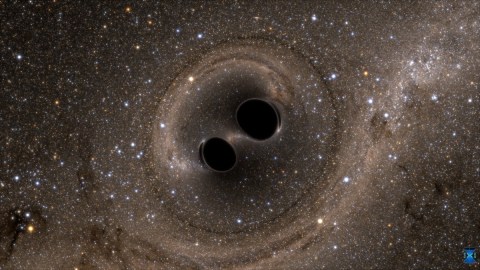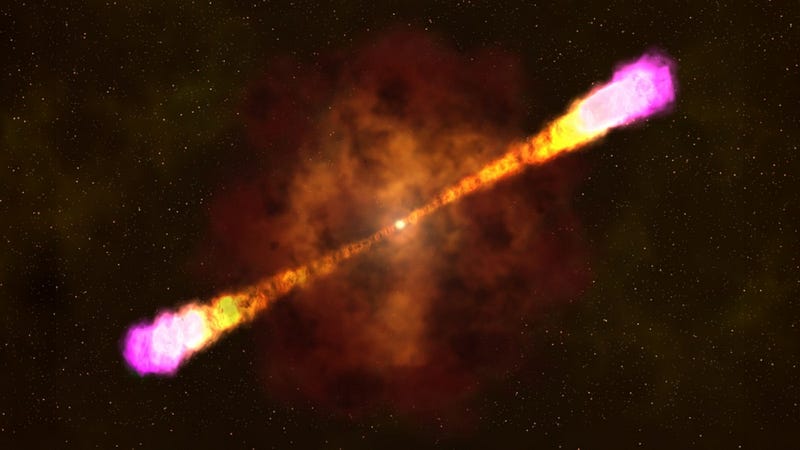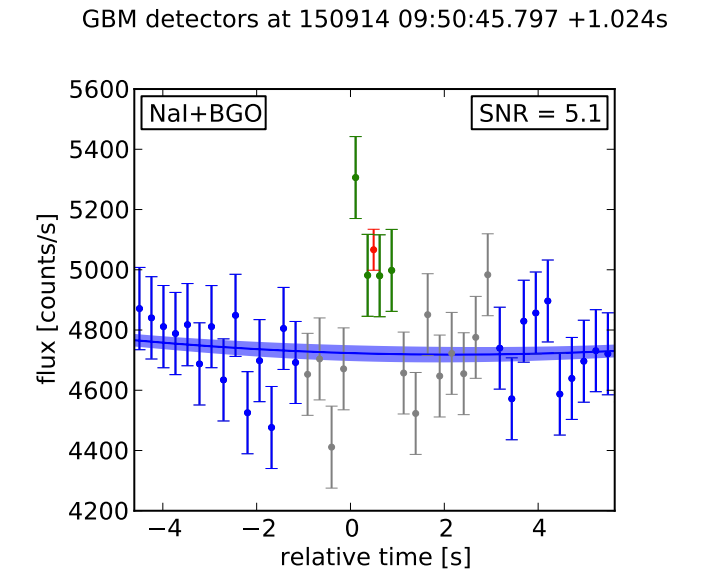99.8% Wrong: NASA’s Fermi scientists are fooling themselves

Gamma rays from black holes? It’s an incredible idea… and it’s probably wrong.
“That’s the next step: to simultaneously see [gravitational waves] with three, four or five interferometers, localize it quickly, within minutes, and have other observatories catch it instantly, and catch it in the optical or the X-ray bands. That’s going to provide a whole new understanding in these cataclysmic events.” –Dave Reitze, executive director of LIGO
On September 14th, 2015, the Advanced LIGO detectors in Hanover, WA and Livingston, LA, both detected a strong, coherent and compelling gravitational wave signal: the first direct detection of such an event. After theoretical and experimental research and development work spanning five decades, an unambiguous signal lasting just 20 milliseconds was recorded, consistently, in both detectors. As a result, we saw the incredible: two black holes, 36 and 29 solar masses apiece, completed their inspiral and merged together, creating a 62 solar mass black hole in the end, spinning at 67% the speed of light, while radiating the other three solar masses away in the form of gravitational waves, having converted them into pure energy from Einstein’s E = mc^2.
In theory, two black holes, when they merge together, should produce no light signals at all. No radio waves, no infrared light, no visible light, no ultraviolet, X-ray or gamma ray light at all. Yet in a data release presented at the American Physical Society’s April meeting, the science team from NASA’s Fermi satellite claims to have detected a gamma ray event coincident with the gravitational wave signal seen by LIGO on that fateful day. On its own, this information is both startling and compelling.

A new paper written by a team led by Valerie Connaughton, currently in peer review, saw a weak “burst” event. The gamma-ray event consisted of a one-time only, roughly instantaneous pulse of high-energy radiation in excess of 50 keV, or about 4000 times the energy it takes to ionize a hydrogen atom. The event wasn’t well-localized, as Fermi covers 70% of the sky, but the part of the sky it was observing contains the majority of the possible location-of-origin of the gravitational wave event –GW150914 — seen by LIGO. The key finding? That the event occurred just 0.4 seconds after the LIGO detection. The probability that this event is a false alarm, according to their analysis, is just 0.22%, meaning there’s a 99.78% chance that this is a real signal. Those sound like pretty good odds!

But from the observational viewpoint, there are a few major bumps in the road.
- First off, a “false alarm probability” of 0.22% is actually quite high, for physics standards! When we want to claim an event as a genuine detection, we require confidence levels where our statistics are robust at the 5σ-level of significance. That corresponds to odds of a false alarm of 0.00003%, or one-in-3.5 million. What we have is something that’s got a one-in-454 chance of being a false alarm, making it just a 2.9σ-level significant event.
- Second off, the Gamma-ray Burst Monitor (GBM) instrument, while it covers 70% of the sky, has an optimal response range over a much smaller area of the sky: an area that did not contain this burst. As the authors of the paper themselves say, “The duration and spectrum of the transient event suggest it is a weak short Gamma-Ray Burst arriving at a large angle to the direction in which Fermi was pointing, where the GBM detector response is not optimal.” In other words, this observation is on the less trustworthy end of the Fermi satellite’s data.
- And finally, there’s a competing satellite programme — the European Space Agency’s INTEGRAL satellite — that definitively saw no high-energy signal associated with the LIGO event. In a paper published last month in the prestigious Astrophysical Journal Letters, lead author Volodymyr Savchenko concluded the following, “We searched through all the available Integral data, but did not find any indication of high-energy emission associated with the LIGO detection.”
In other words, that “0.22%” chance actually indicates that there’s a high probability this signal is, in fact, a false alarm. Sure, if it is real, we can narrow down the location of the signal, but that requires a pretty big assumption that the data, as it exists right now, doesn’t adequately justify.
That isn’t to say it couldn’t be real, or that the Fermi results aren’t at least suggestive. One of the next goals of the LIGO collaboration is to couple their gravitational wave findings — for all future detections — with electromagnetic (light-based) signals. In theory, two merging black holes wouldn’t produce electromagnetic radiation, but two merging neutron stars, another source of gravitational waves that LIGO is sensitive to, should produce them. It’s also conceivable that black holes don’t produce these gamma rays, but the accretion disks or the environments surrounding them do.

The gravitational waves from this event are certainly real, but the electromagnetic signals are far less certain. As always, the issue won’t be settled by two different teams arguing over whose results are better, Fermi’s or INTEGRAL’s, but rather by more and better data from subsequent events. The science of gravitational wave astronomy has finally moved into its infancy, and this is the first attempt at taking the next steps. Keep an open mind for how this will turn out, but be extremely cautious about these claims until that superior data is available!
This post first appeared at Forbes. Leave your comments on our forum, check out our first book: Beyond The Galaxy, and support our Patreon campaign!





